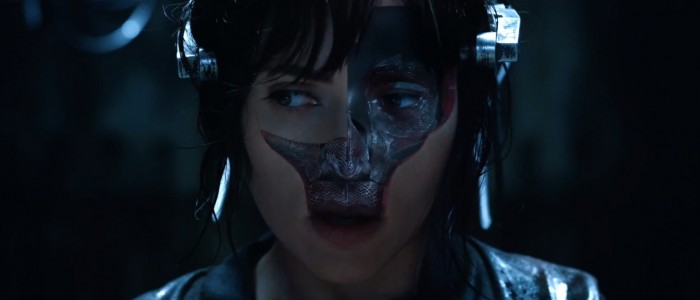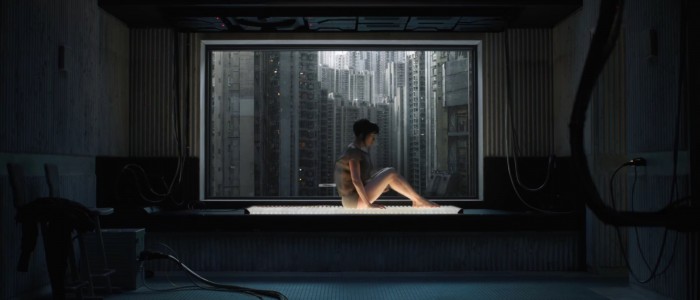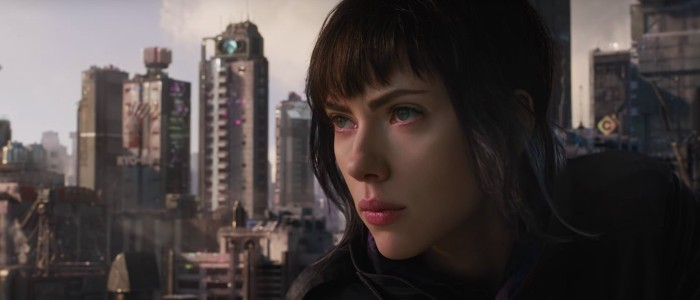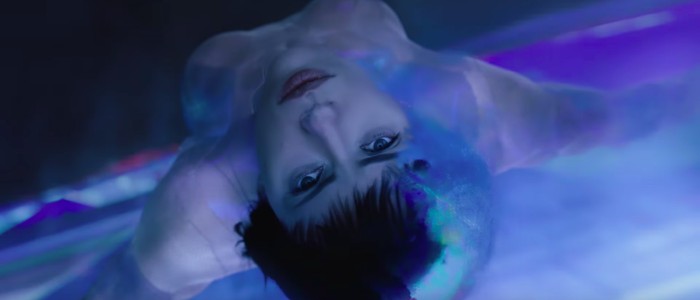Erasing Motoko: The Question Of Race In 'Ghost In The Shell'
(Welcome to The Soapbox, the space where we get loud, feisty, and opinionated about something that makes us very happy...or fills us with indescribable rage. In this edition: the subject of racial erasure in Ghost in the Shell.)
The live action Ghost in the Shell has been the eye of a storm of controversy ever since its inception. It's been accused of whitewashing due to the casting of Scarlett Johansson as the franchise's protagonist, Major Motoko Kusanagi, as well as deeply unpleasant rumors that CGI had been used to alter an actor's appearance to "shift [their] ethnicity." Coming on the heels of similar controversies (Doctor Strange, Iron Fist) and discussion, the conversation around it (arguments that the movie speaks for itself when it comes to the casting controversy, that the movie's visuals are merit enough to disregard the problems inherent in it) only seems more tone-deaf, especially considering how those problems stack up.
The Major(’s) Issues
By this time, you've probably either already seen the movie, or heard of what the "twist" is. In case you haven't: Scarlett Johansson plays Major Mira Killian, purportedly the first of her kind as a cyborg with a human brain and a robotic body. As the movie progresses, she begins experiencing "glitches" that hint at her past life. She discovers that she is, in fact, Motoko Kusanagi, a young Japanese woman who ran away from home and was subsequently abducted by Hanka Robotics. This comes to light in a sequence in which she meets Motoko's mother, played by Kaori Momoi, and the film ends with the both of them at Kusanagi's grave as Mira tells her that she doesn't need to mourn anymore, and claims her identity as simply "Major." There's a double-whammy there too, as Kuze, Michael Pitt's character, turns out to be another instance of a Japanese brain in a white body as well. (He was once "Hideo," as revealed when he and Mira find their "original" names carved — in English — into a wooden post.)
More than anything else, the fact that this finagling exists suggests that there was some level of awareness on the part of the filmmakers that this was a problem. This in turn begs the question of why the story wasn't either adapted to make Major white from the get-go, or go deep on the identity politics of such a change. The last example of something explicitly similar I can think of is the villain in Die Another Day, in which a North Korean soldier undergoes extensive surgery in order to become a white man. That reveal, too, lands like a lead balloon, though the unexplored implication is clearer: it was easier to get around as a white man. The best argument that can be made for Ghost in the Shell is that no one would recognize Motoko post-procedure, but even then, it's not convincing. Not all Asian people look alike, after all.
It's made explicitly clear that Kusanagi was Japanese, which throws Johansson's comments on the character's search for her identity ring untrue. When Mira discovers Motoko, the revelation is just a blip before she decides to just call herself "Major" instead. There's no reconciliation between her heritage and former politics with her current work and new appearance, itself already an easy hook for more extensive discussion given the way Western beauty standards are omnipresent in the East — plastic surgery is the norm in East Asia, specifically with the intent of conforming to Western standards. Women add folds to their eyelids, change the slopes of their noses, even shave bone from their skulls to alter the lines of their chins. Then there's the fact that Kusanagi's identity, despite being the crux of the movie, is boiled down just to her name. In the flashbacks scattered throughout the movie, Motoko's face — despite the actual casting of a Japanese actress, Kaori Yamamoto — is either obscured or blurred out. In that sense, maybe Johansson can get away with saying that she would never attempt to play a character of a different race; the Japanese names and characters in this movie are all tokens, lip service and surface ways of justifying using a Japanese property while erasing evidence of its origin.
Trouble in Section 9
This general sense of tokenism extends to the rest of the cast, too. There's been much made of the "diversity" in the movie, but how much does that count for when every character of color could be excised from the narrative without any serious cost to the story or to the running time? Chin Han and Itaka Izumihara, as Togusa and Saito, are non-presences, and while the legendary "Beat" Takeshi Kitano has the best material in the movie as Section Chief Aramaki, he isn't actually given that much to do. Nothing in the story would really change if Aramaki were simply cut out.
Then there's the quandary brought up by the fact that Aramaki is the only character in the movie to speak Japanese in a city still relatively coded as Japanese. This makes it clear that everyone speaking English isn't just a byproduct of the movie being an American production or that the movie needed to avoid subtitles, and as far as context goes, that the characters aren't just comprehending via cyber implants (other languages — including French — still sound like other languages, they aren't all folded together). Takeshi speaks in subtitled Japanese, and the other characters understand him perfectly, all the while still responding in English. Similarly, Aramaki is also the character whose behavior, outfit, and accessories (his gun holster has an illustration of a samurai stamped into it) are most directly coded to (perceived) Japanese culture.
One or the Other
The other Asian presences in the movie are all caricatures; the women are geisha robots and the men are cartoonish yakuza. It's impossible to imagine that in an entire (and presumably Asian) city, all of the Asian population would be stereotypes, but there it is. The yakuza in particular are off-putting, as they are all characterized as creeps and lowlifes, and are included to no real end in the story except as a truly momentary obstacle. They're wiped out and killed within moments of being introduced. The geisha robots — sporting face-casts of Rila Fukushima that aren't at all recognizable — have some grounding in the original series, but Fukushima ultimately has just as little to do as Han and Izumihara, making the Japanese actress' contribution seem all the more like a waste, especially since she's shown herself capable of carrying significant parts in adapted properties before (Wolverine and Arrow). As such, the legacy and origins of Ghost in the Shell's original manga and anime forms are stripped away and replaced with stereotypes, which feels like a particularly ironic turn considering the cultural give-and-take and erasure that gave birth to it.
Non Port City
The setting of the movie is never explicitly named. The source manga is set in the fictional Japanese New Port City in the Niihama Prefecture, and given everything else, it almost feels like a deliberate move to exclude that detail from this adaptation. The skyline is reminiscent of Hong Kong, the housing complexes are typical of East Asian developments, and though all audible ads seem to be in English, there's Chinese, Korean, and Japanese text visible in the huge holograms that float throughout the city. Unfortunately, this lends itself to an uncomfortable sort of anonymity. There's a habit of conflating Asian cultures in Western society despite the huge differences between them (in history and in culture), and this movie seems happy enough to go along with the practice. There's an excuse, yes, insomuch as this futuristic city is a melting pot, but it's flimsy (as are all of this movie's excuses) in light of how the movie treats the issue of Mira's identity as well as the homogenous nature of the rest of the worldbuilding.
The signifiers of Japanese and otherwise Asian cultures are all surface-level. From the geisha and yakuza to images of pagodas and monks, and even Motoko's grave, everything seems like a lifted image. It's a strange kind of Orientalism, as the movie picks and chooses what it wants to keep from the original property, going for aesthetics over content and meaning (and ultimately negating the former as a direct result). It doesn't help that the "futuristic" signifiers are all things we've seen in sci-fi movies before.
Giving Up the Ghost
That this movie comes so soon after a work so explicitly about race as Get Out is baffling. There's a horror story to be told in the appropriation of bodies and minds, but Ghost in the Shell is a part of that narrative instead of presenting it. There are a million points that could have been made by the movie itself, from the way parts of Asian culture are considered "cool" in American culture to the implications that Motoko was "improved" upon being put in a white body, but Ghost in the Shell goes for none of them, and thereby corroborates the poor racial politics that its team has tried to deny.
The bottom line is this: the movie doesn't find Motoko — it erases her.





